Top stories of 2023
1. Executive Order advances biodiversity conservation in the Commonwealth
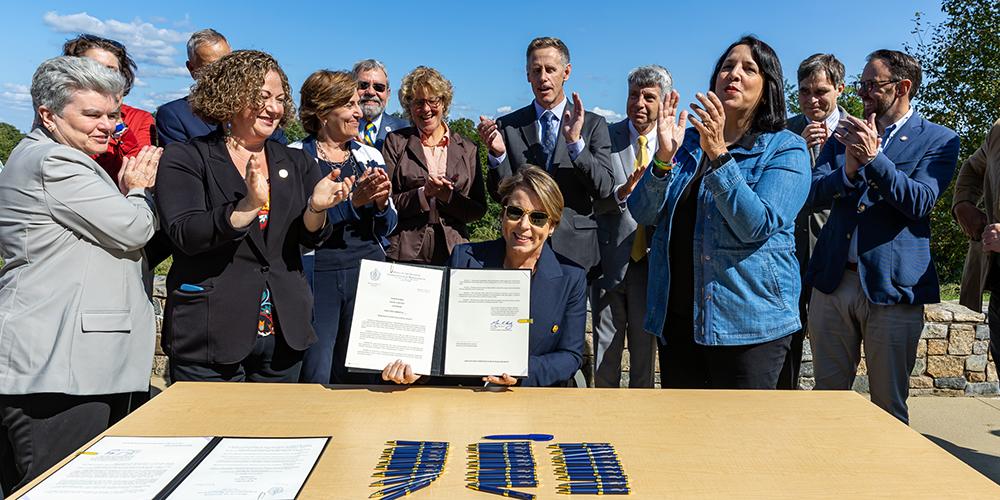
In September, Governor Maura Healey announced that Massachusetts will develop ambitious biodiversity goals for 2030, 2040, and 2050. The Department of Fish and Game, of which MassWildlife is a part, is taking the leading role in drafting these objectives to conserve biodiversity. Goals will focus on sustaining a full array of plants, animals, and habitats in the Commonwealth while providing all people access to nature. Since the announcement, biologists and staff at MassWildlife have been busy drafting recommendations for ensuring a climate-resilient Massachusetts now and into the future. Read more about the Executive Order. (Photo by: Charlotte Hysen/Governor's Press Office)
2. Increasing venison donations fight hunger
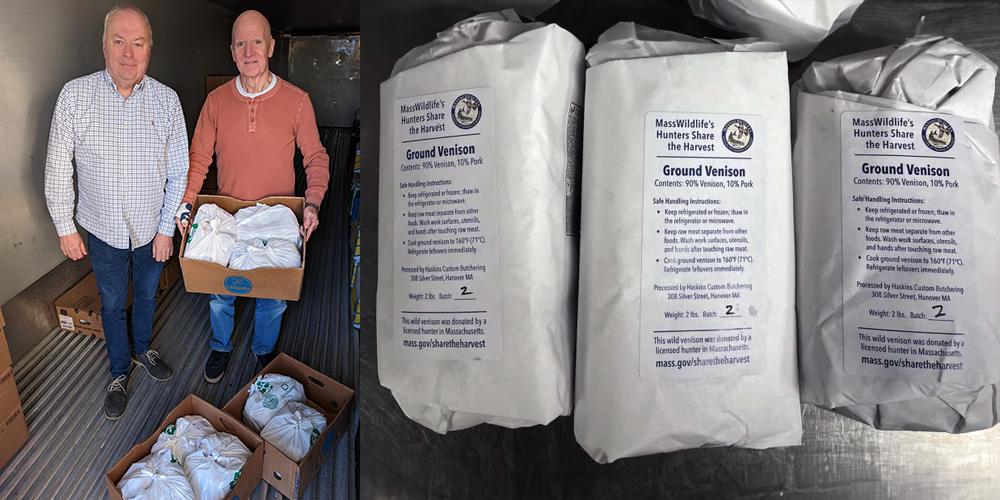
After a successful pilot year, MassWildlife’s Hunters Share the Harvest Program expanded in 2023. As of December 1, Massachusetts deer hunters have donated more than 3,000 pounds of venison—the equivalent to over 12,000 meals—to families facing food insecurity. This year, MassWildlife is partnering with the Massachusetts Military Support Foundation’s Food4Vets and Daniel’s Table to distribute venison to those in need. Venison provides a healthy source of protein during a time when obtaining fresh meat can be a challenge for food pantries. With another month of deer season to go in 2023, venison donations are already 8 times greater than in the pilot year! The program has been so successful that more monetary contributions are needed to offset the cost of processing and packaging. Learn how to support the program at Mass.gov/ShareTheHarvest.
3. Rare species show improvement following habitat restoration
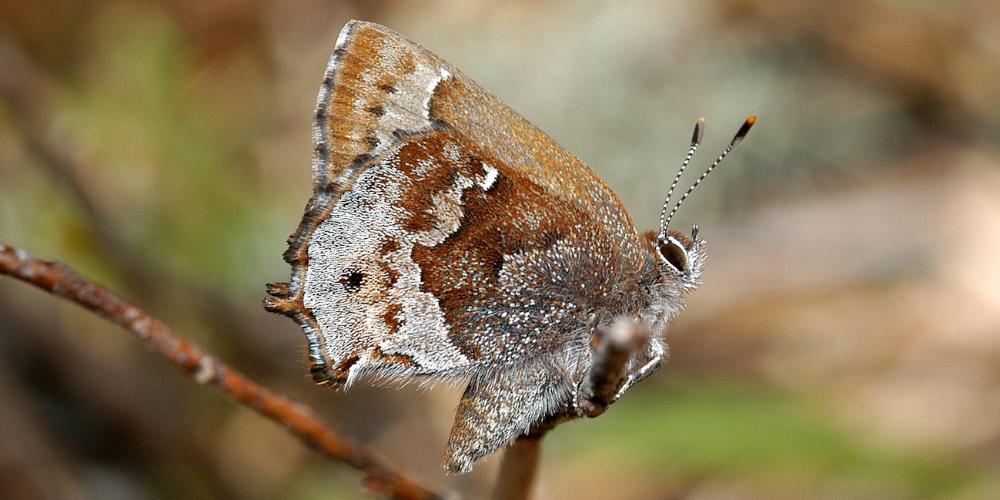
Two rare insect species were found at two MassWildlife properties this summer. These welcome discoveries were celebrated as the latest evidence that habitat restoration efforts are successful and helping both rare and common wildlife. MassWildlife’s work at Montague Plains and Muddy Brook Wildlife Management Areas (WMA) focuses on restoring barrens habitat using tools like prescribed fire to encourage growth of specialized native plants. Biological surveys at both properties show that restoration is having a positive impact on local wildlife including insects like the ones discovered this summer.
4. Fishing awards program expanded
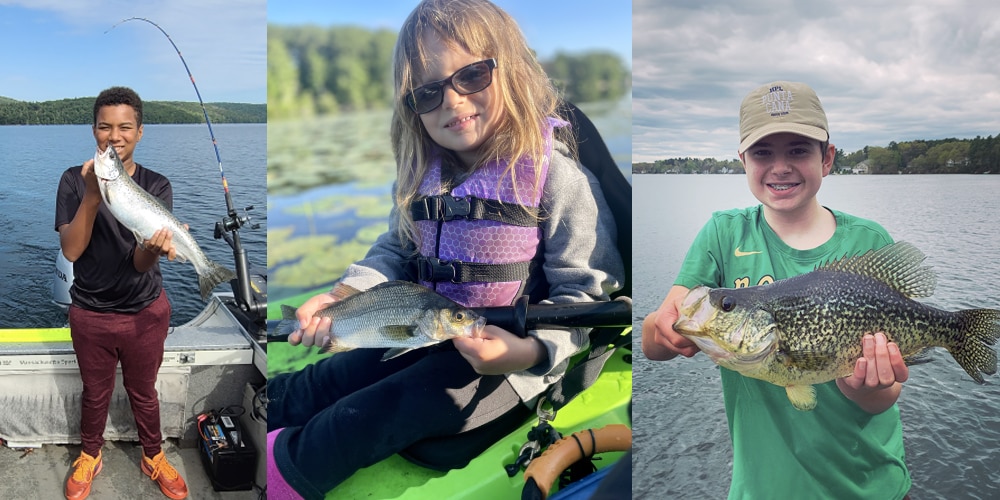
MassWildlife’s popular Freshwater Sportfishing Awards Program expanded in April of 2023 by adding prizes for fallfish and white suckers as well as a new Catch and Release category for anglers under 18. These additions offer anglers of all ages a new challenge. So far, MassWildlife has received entries of about 40 fallfish and 60 white suckers that meet the minimum length or weight requirements. About 850 submissions have been received from youth anglers in the new Catch and Release category. Over 2,370 prize pins have been awarded to date in 2023— learn how to enter your catch and earn prizes.
5. Run for Wildlife

In September, MassWildlife hosted the Run for Wildlife race in Westborough. Thanks to the support of sponsors, volunteers, and over 160 registered runners, the event was a huge success! All proceeds from the event went toward supporting endangered species conservation in Massachusetts. Runners in the 5K, 10K, and kids fun run traversed parts of the beautiful, 900-acre Wayne F. MacCallum Wildlife Management Area. Before and after the run, guests learned about some of the 430+ species that are protected under the Massachusetts Endangered Species Act (MESA) by visiting educational displays and speaking with MassWildlife biologists. Read more about the event.
6. R3 Summit promotes hunting and fishing
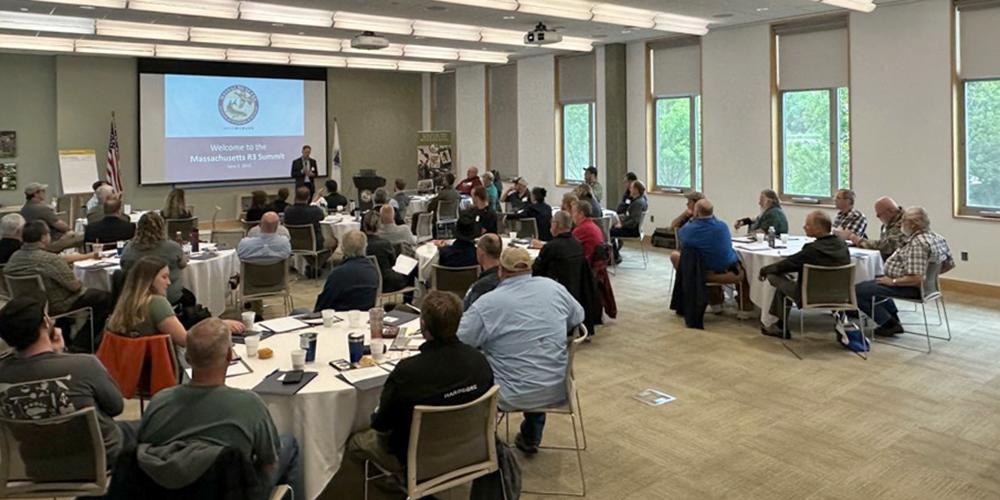
In June, MassWildlife and representatives from 30 partnering organizations met to expand collaboration on efforts to increase participation in outdoor activities in Massachusetts. R3 is a national movement to Recruit, Retain, and Reactivate hunters, anglers, and shooting sports participants. The R3 initiative is a response to ongoing state and national trends. Participation in fishing and hunting peaked in Massachusetts in 1988. Since then, fishing has declined by 40% and hunting by 58%. These downward trends are occurring nationally as well, which has led to a movement to reconnect and introduce people to these outdoor pursuits and keep outdoor recreation relevant to future generations. Ideas generated during the Summit were collected and are being used to prepare for the next phase of R3 work. Read more about the Summit.
7. MassWildlife staff help battle wildfires in Canada and Montana

In July, two members of the MassWildlife prescribed fire crew (Connor Fleming and Ben Mazzei) joined with other trained New England firefighters to help battle wildfires in Quebec. Massachusetts, along with other states and Canadian provinces in the northeast are part of a compact to provide aid to one another when wildland fires become too intense for a single state or province to control. Crew members returned home safely and received praise and recognition for supporting the international effort. In August, a second crew of wildland firefighters from Massachusetts helped battle wildfires in Montana. In addition to firefighters from DCR, this crew included two members of the MassWildlife prescribed fire staff, Ben Mazzei and Jacob Morris-Siegel. Experience from these deployments provides staff with additional training and translates into improvements to MassWildlife’s prescribed fire program. Read more about deployments to Canada and Montana.
8. Turtle conservation gets a boost from a federal grant
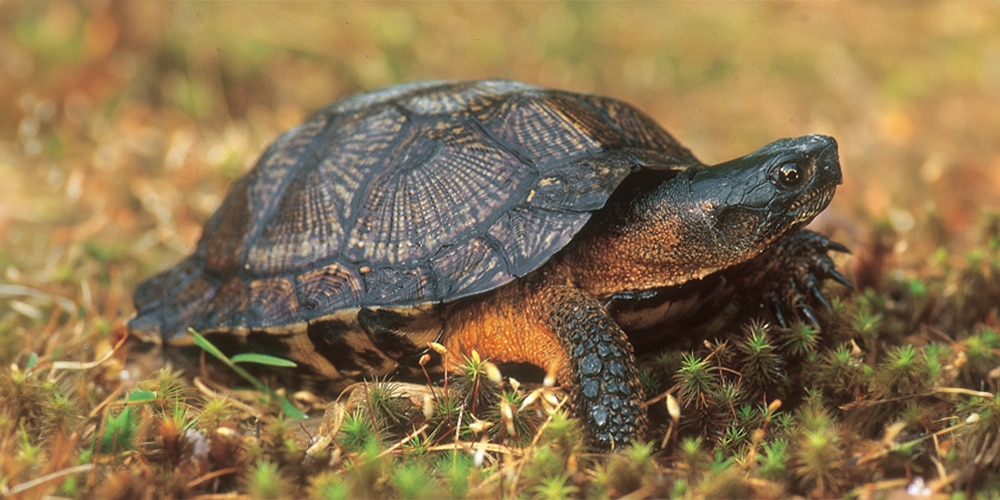
Earlier this year, MassWildlife was awarded a Competitive State Wildlife Grant from the U.S. Fish and Wildlife Service to support conservation efforts to help rare turtles in Massachusetts. Funding from the grant will be used to benefit four different species—Blanding’s, bog, spotted, and wood turtles—through research and habitat improvements. This award will support the implementation of regional conservation plans for each species developed cooperatively by northeastern state wildlife agencies from Maine to Virginia. Take a closer look at the four turtles that will benefit from grant funding.
9. New plant discovered in the Berkshires
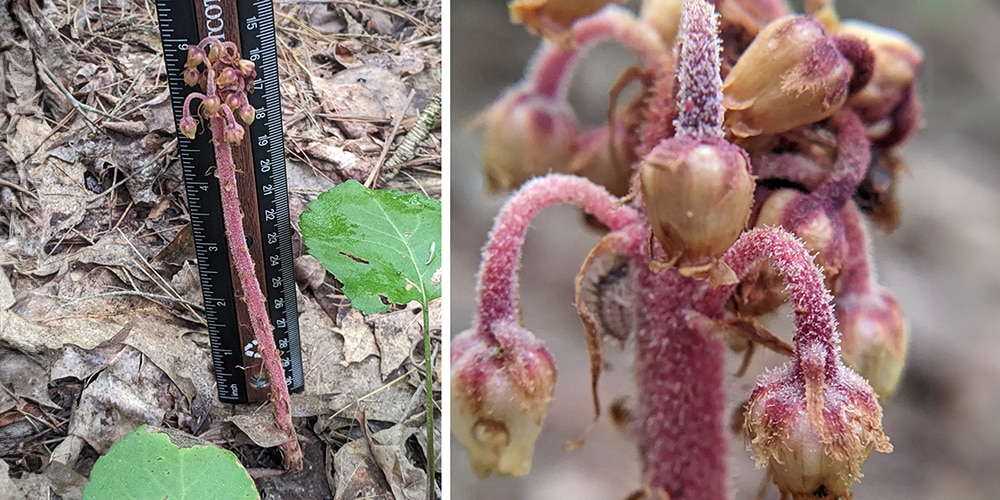
This summer, MassWildlife botanists confirmed the first record of the “pine-drops” plant in Massachusetts. The specialized plant is only found in a few patches in the Northeast region. The pine-drops plant is unusual; it contains no chlorophyll and relies on mycorrhizal fungi in the soil for nutrients. It’s unclear whether more of these plants will be found in Massachusetts. The exciting new observation will certainly add to our understanding of biodiversity in the region. Read more about pine-drops discovery.
10. Wildlife Management Area cleanups
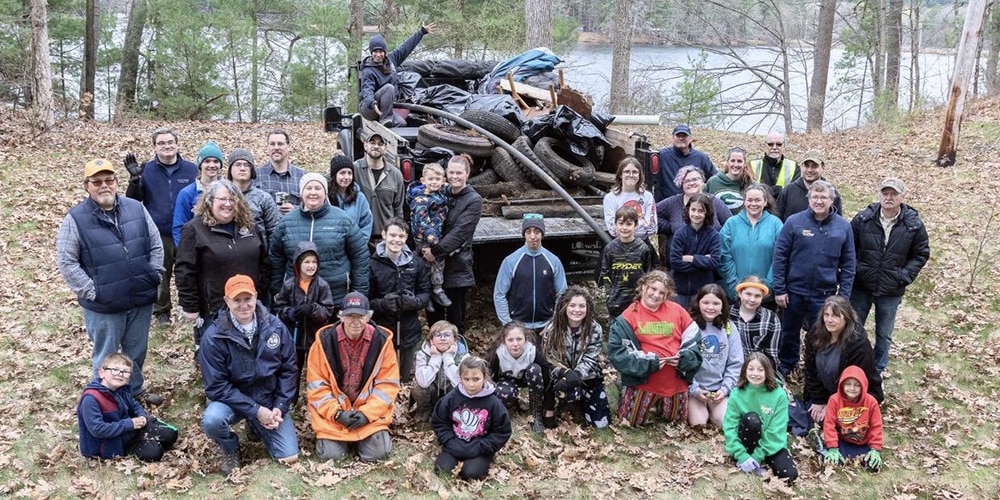
This spring and summer, MassWildlife joined with volunteers to celebrate public lands with clean-up events at 5 Wildlife Management Areas (WMA) across the state. Scout groups, hikers, birders, hunters, and anglers met to pick up trash at WMAs in Lenox, Palmer, West Brookfield, Ashby, and Fall River. Volunteers hauled out hundreds of pounds of trash and then spent time hiking, fishing, and birding in the area. MassWildlife owns and manages over 220,000 acres of land to conserve fish and wildlife habitats and provide access for outdoor recreation—find a property near you.
Which animals hibernate?
With less food and cold temperatures, some animals cope by slowing down or hibernating in winter. During this busy time of year, draw inspiration from local wildlife and find time to rest as we approach the new year.
As temperatures start to drop, you may start to grow envious of the animals that rest, or hibernate, through New England’s snowy season. Hibernation is a behavioral adaptation that allows animals to survive low temperatures and periods of time without food. When an animal hibernates, they decrease their body temperature, metabolic rate, heart rate, and respiratory rate. This energy reduction allows the animal to survive without eating or drinking when food becomes scarce during the winter. A few animals, like woodchucks, are "true hibernators". Other species can reduce their body temperature and metabolic rate during the winter, but are not true hibernators since they can rouse easily or become active during warm periods.
Bats
Bats are some of Massachusetts’ few true hibernators. During hibernation, bats slow their heart rate to 10 beats per minute and their body temperature drops to a few degrees above the surrounding air temperature. Because of this, they find spaces with temperatures between 30 – 40° F. Big brown bats hibernate in buildings, caves, or mines during the winter. Little brown bats, northern long-eared bats, Indiana bats, eastern small-footed bats, and tricolored bats hibernate in caves and mines. Bats that exclusively use caves and mines for hibernation have unfortunately been gravely impacted by white-nose syndrome. This deadly fungal disease can cause bats to wake up from hibernation during the winter, causing them to burn through their essential fat reserves. Learn more about white-nose syndrome and how you can help bats.
Black bears
While most black bears slow down in the winter, they are not true hibernators. Bears often remain in their den without eating, drinking, or excreting waste for nearly 5 months. Even so, their body temperature does not drop substantially and they can awaken easily. To prepare for winter, bears enter a period called hyperphagia in late summer and fall when they increase their feeding activity to build up fat reserves before denning. Most bears are signaled to enter their den in November and December when food starts to become scarce. If human-associated foods, like bird feeders, are available year-round, bears may remain active during the winter. Help bears remember to enter their dens by removing all food sources on your property including bird seed, suet, pet food, and unsecured garbage.
Skunks
Like bears, skunks decrease their activity during the winter but are not true hibernators. While skunks are generally solitary animals, there have been reports of communal winter denning, with some cases of 10 or more skunks gathered together to keep warm! When temperatures stay below freezing, skunks sleep to conserve energy. However, if nighttime temperatures are over 30° F, skunks become active for short periods of time. Dog owners should be aware that these fragrant critters can still be encountered on unseasonably warm winter nights.
Reptiles
Although reptiles don’t hibernate, they have their own way of coping with Massachusetts winters. Reptiles are ectothermic, also known as ‘cold-blooded’, meaning they rely on their environment to control their body temperature because they cannot produce their own body heat. When days become cooler, reptiles become less active, lower their metabolic rate, and wait for warmer weather to return. This dormant period is known as brumation. During brumation, reptiles can survive long periods without eating but still need to drink to prevent dehydration. On warmer winter days, they may emerge to seek out water or bask in the sun.
Trout spawning
Fishing may not be top of mind in December, but there is no off season for our trout hatcheries! Get a behind-the-scenes look at what it takes to produce a new crop of trout.
MassWildlife’s hatchery staff are busy year-round raising fish that will eventually get stocked into lakes and ponds throughout the state. It all starts with making fertilized trout eggs in a process called spawning.
On a chilly and rainy day in early November, a team of MassWildlife staff gathered at the Sandwich hatchery to start the spawning process that will create the next generation of trout. To make sure everything goes smoothly and efficiently, 6–7people help out and each have a very specific job to do.
- The day starts with the team setting up a tent with everything they need including a table, containers, nets, towels, bowls, a large tub, and sampling equipment.
- Everyone gets to their station and the fish are put into a tub of water with a sedative to help them relax while being handled.
- Staff start by gently squeezing a female trout to release her eggs. Fish are spawned at three years old and weigh 2–5 lbs. Each female can produce 1,000–3,500 eggs per pound of body weight!
- After eggs are taken from the female, milt from the male fish is squeezed into the same bowl as the eggs. The fish are handled for as short of time as possible and returned quickly to the water to minimize stress.
- Staff add a small amount of water to the eggs and milt, and stir to activate the sperm. This encourages fertilization.
- Next, the fertilized eggs are moved indoors and undergo a process called water hardening where they are placed under cold, running water for about an hour to mimic a flowing stream. The eggs swell and change from a jelly-like consistency to the hardness of a ping pong ball.
- The next step is to disinfect the eggs using an iodine solution and place them into baskets where they remain undisturbed for the rest of the day.
After spawning, the work continues to make sure the eggs successfully hatch.
Trout timeline
- 2 days after spawning: Dead eggs, which turn white, must be manually siphoned and removed. Staff pick out any dead eggs to avoid damage to the living eggs and to prevent fungus growth. This is a very slow and extremely tedious process.
- 2 days after picking eggs: Eggs incubate for 16 days. Eggs are VERY sensitive during this time and cannot be touched.
- 16 days later: Staff check on the eggs and again remove any that have died during incubation.
- 5–7 days later: Eggs enter the “eyed-up” stage of development—two black eye dots become visible. Once they reach this stage, the eggs are less fragile and hardier.
- A few days later: The eggs will be screened again and any unhealthy eggs are discarded.
- 6 weeks later: Eggs start hatching. Hatching usually takes 3–4 days and happens between the end of December and early January.
After hatching, the fish will grow at the hatchery for 1.5–2.5 years until they reach stocking size. MassWildlife operates five fish hatcheries in the state, located in Sandwich, Belchertown, Montague, Sunderland, and Palmer. Each fall, hatchery staff manually spawn trout at Palmer and Sandwich hatcheries to produce more than 1.5 million fertile brook trout, brown trout, and tiger trout eggs.
Volunteers help deer hunters statewide
MassWildlife’s 2023 Becoming an Outdoors-Woman Deer Hunt, Deer Hunt for Paraplegic Hunters, and Youth Deer Hunt Day have concluded. Congratulations to all hunters who participated and thank you to the many volunteers and mentors who made these programs successful! Read more about each of the hunting opportunities below.
Becoming an Outdoors-Woman mentored deer hunt
MassWildlife’s Becoming an Outdoors-Woman (BOW) Program offers shooting skills workshops, hunting seminars, and other outdoor skills classes and activities designed for adult women. This fall, MassWildlife offered a deer hunting seminar and a mentored hunt for women who are new to deer hunting. During the seminars, students learned about the lives and habits of white-tailed deer, deer hunting regulations, equipment, and safety, and practiced new skills like shooting, scouting, and recovery. Eighteen women participated in the mentored deer hunt at the Fort Devens Military Area in Lancaster on opening day of shotgun deer season, and 3 women harvested deer.
When asked what they liked most about the deer hunt, participants responded: “Camaraderie, instructor knowledge, and a safe, encouraging place to learn;” “I enjoyed the in-person seminar and hands on training, and really enjoyed the mentored hunt;” “I loved tracking and seeing so many deer.”
MassWildlife is grateful for the many volunteers and mentors who make the Becoming an Outdoors-Woman Program possible. Learn more about BOW and sign up to be notified of future workshops.
Deer hunt for paraplegic hunters
Each year, volunteers come together to help paraplegic deer hunters during a special 3-day season. This year’s hunt was held November 2–4. The 2023 hunt was a success with 18 hunters, including four hunters who were new to the program, participating. Hunts took place in the northern and southern Berkshires sites, at the Quabbin Reservoir, at Fort Devens, and at Joint Base Cape Cod. All hunters saw deer and 10 deer were harvested. This is the highest number of deer harvested during the para hunt since 1995 when a total of 13 deer were taken.
As always, this hunt would not be possible without support from a group of dedicated volunteers. This year, the hunt was supported by: 12 MassWildlife staff, 5 MA Environmental Police officers, 7 staff from the Department of Conservation and Recreation, 7 private landowners, 4 military personnel, and 30 other volunteers. Learn more about the deer hunt for paraplegic hunters.
Youth Deer Hunt Day
MassWildlife created this special hunt day to allow young hunters ages 12–14 to hunt using their own permit while afield with a licensed adult. Young adults 15–17 with a hunting license can also participate on this special day with a free youth deer permit. The Youth Deer Hunt Day is held on the fourth Saturday following Labor Day, prior to the opening of other Massachusetts deer seasons. This year’s hunt took place on September 30. Though some data is still coming in, the preliminary harvest total for the 2023 hunt is 144.
Next year’s Youth Deer Hunt Day will be held on September 28, 2024. Learn about rules and licensing requirements for the hunt.
Avoid decorating with invasive plants
During the holiday season, many people use plants to decorate their homes or businesses. If you wish to use plants in your decorations, be sure to select native species such as native pines, spruces, hemlock, American holly, mountain laurel, fir, or winterberry holly.
Avoid exotic, invasive plants like Oriental bittersweet (Celastrus orbiculatus) and multiflora rose (Rosa multiflora). These plants may have attractive berries, but they can cause severe damage to native plants, shrubs, and trees. Invasive plants can spread quickly in open fields, forests, wetlands, meadows, and backyards, crowding out native plants that provide valuable wildlife habitat. Oriental bittersweet can even kill mature trees. Cutting and moving these invasive plants to make wreaths or garland can spread their seeds even more. Birds may also feed on the fruits hung for decoration and further spread the digested but still-viable seeds. Both plants are extremely difficult to control; when cut, the remaining plant segment in the ground will re-sprout and grow quickly. It is illegal to import or sell bittersweet and Multiflora rose in any form (plants or cuttings) in Massachusetts.
Get tips to identify Oriental bittersweet and multiflora rose below or click here to learn more about invasive plants in Massachusetts.
Oriental Bittersweet

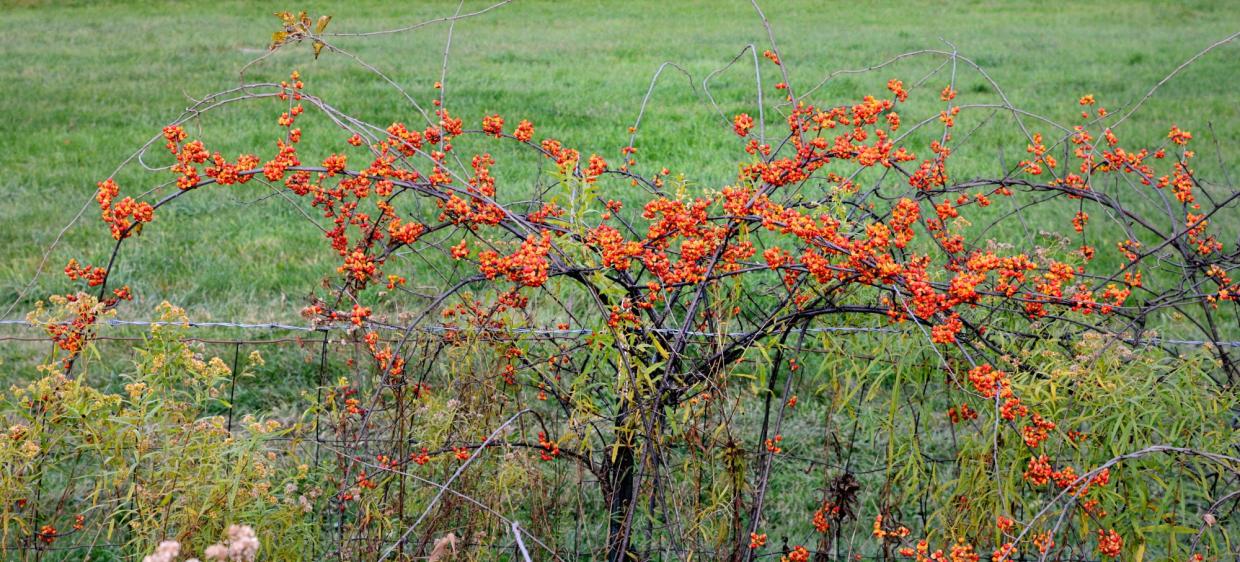
Identification: A climbing deciduous, woody vine that can grow up to 60 feet long and up to 6 inches in diameter. It can also grow along the ground spreading orange-colored roots. Young stems are brown with warty lenticels (raised pores); bark of older plants appears gray. New twig growth is smooth and green. Leaves are rounded and are narrower at the base. Small greenish flowers bloom from May to June. Yellow-orange capsules are produced from July to October. Later in the fall, the seed covering splits open to reveal red-orange seeds.
Threat: Oriental bittersweet grows fast and wraps around nearby shrubs or trees. Native woody plants can be shaded out, strangled, or uprooted. It can reproduce by seed or through root suckers.
Multiflora Rose

Identification: A deciduous shrub with arching and scrambling stems that may grow up to 10–15 feet tall. The stems are red to green with scattered, broad-based prickles. Each leaf has 5–11 elliptical leaflets with sharply serrated edges. After the flowers fade in late summer, rose hips (resembling leathery red berries) are left on the plant and remain throughout the winter.
Threat: Multiflora rose grows in dense thickets and quickly outcompetes other plants. It can completely dominate abandoned fields or pastures. Each plant can produce half a million seeds and these may remain viable in the soil for up to 20 years.
Art contest connects youth artists to nature
There is still time to enter the Massachusetts Junior Duck Stamp (JDS) contest. Students from kindergarten through grade 12 can submit original artwork to participate in this fun and educational competition. The entry deadline is February 15, 2024. The process of creating these works of art allows students to appreciate the importance of preserving wetland habitats and the delights and diversity of wildlife. "Even if students do not enter the competition, science and art teachers will value the JDS curriculum as a useful resource," advises MassWildlife’s Wildlife Education Coordinator, Pam Landry.
The JDS program links the study of wetlands and waterfowl conservation with the creation of original artwork. Students in grades K-12 learn about the habitat requirements of various kinds of ducks and geese and then express their knowledge of the beauty, diversity, and interdependence of these species artistically, by creating a drawing or painting which can be submitted to the JDS art contest. The art is judged in four age group categories in a statewide competition; the entry judged Best of Show moves on to represent Massachusetts in the national JDS competition. Art teachers, science teachers, and parents who home-school can visit our website for an information packet and entry information.
For more information contact Pam Landry at pam.landry@mass.gov.
Give a gift on the wild side
Now is the time of year to think about the outdoor or wildlife enthusiast on your holiday list—consider the following wildlife-related gifts available from MassWildlife.
MassWildlife Publications
- A 2-year subscription to Massachusetts Wildlife magazine ($10) delivers eight full-color issues of the Commonwealth’s best wildlife publication. The magazine is packed with award-winning articles and photos on the environment, conservation, fishing, hunting, natural history, and just about everything related to the outdoors in Massachusetts. Subscribe by mail or online.
- MassWildlife offers Massachusetts-specific field guides including Guides to Amphibians and Reptiles and Animals of Vernal Pools. Order MassWildlife publications.
Charitable Donations
For the person who has everything, make a donation in his or her name to support one of the following:
- MassWildlife's Hunters Share the Harvest Program provides an opportunity for hunters to donate and share wild game meat like venison with Massachusetts residents in need. Anyone can help financially support the program to cover the cost of meat processing and packaging. A donation of $25 will provide about 50 servings of meat for families in need! Donate online through the the Massachusetts Outdoor Heritage Foundation.
- The Wildlands Fund is dedicated to acquiring and conserving important wildlife habitat open to wildlife-related recreation.
To donate: Send the honoree’s name with a check payable to Comm. of Mass–Wildlands Fund
Mail to: MassWildlife, 100 Cambridge Street, 6th floor Boston, MA 02114 - The Natural Heritage and Endangered Species Fund supports protection of the 400+ animals and plants listed under the Massachusetts Endangered Species Act.
To donate: Send the honoree’s name with a check payable to Comm. of MA–NHESP
Mail to: MassWildlife, NHESP, 1 Rabbit Hill Road, Westborough, MA 01581
Contact for MassWildlife Monthly December 2023
Online
| Date published: | November 30, 2020 |
|---|